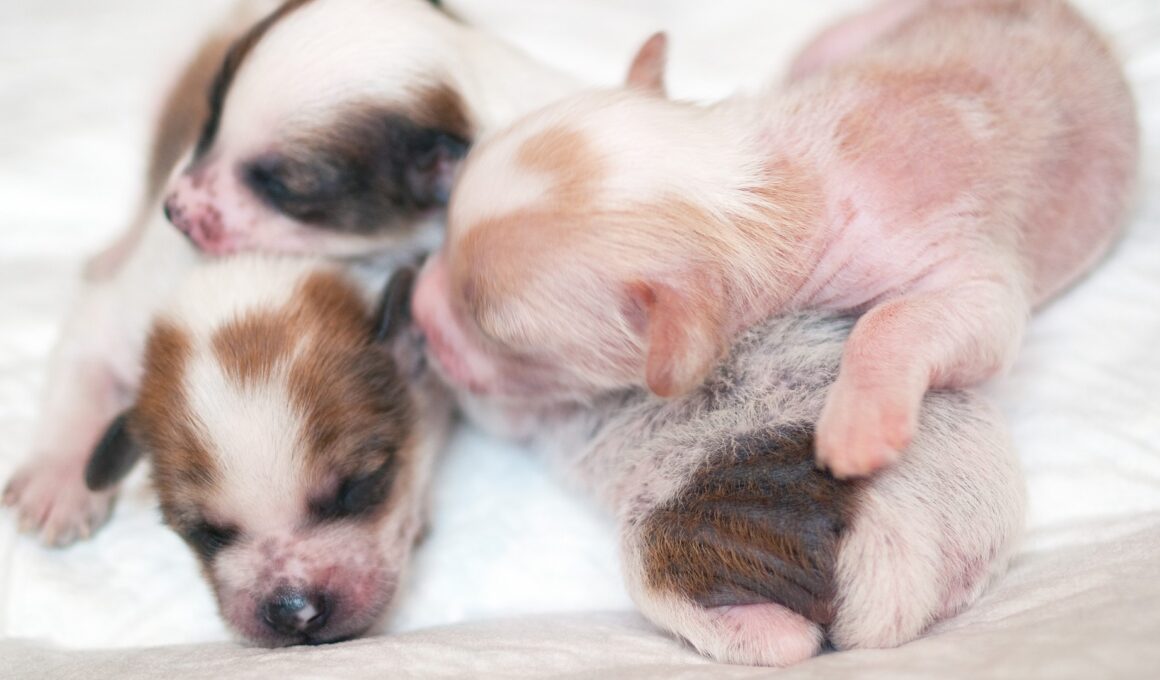Generally speaking, all puppies will eventually wean in their own time but if you do not have the luxury of waiting until the natural process occurs then you may need to help speed things along. Most of the time breeders are trying to get puppies into their new homes by the time they are 8 to 10 weeks old. For this reason they want to be sure that the puppies are eating on their own and thriving. In order to ensure this they begin weaning the puppies quite early. There are a few tips and tricks involved with getting the puppies to begin eating their own food and to help mom make the transition as well.
Begin Feeding a Mash at About Three Weeks
When the puppies get to be about 3 weeks old their little teeth will already be coming in. This marks a great time to start getting them interested in solid foods. However, you cannot just throw puppy kibble on the floor and expect them to eat it. The best thing to do is to soak a little of the same type of puppy kibble the mother dog has been eating in some hot water. Once the kibble is soft and mushy then you will want to take a little bit of puppy replacement milk, goat’s milk or as a last resort, canned evaporated milk and mix it in with the soaked kibble. Make it a loose consistency and find a hard flat surface to put it on which will allow the puppies to walk around in it and get used to licking it off their feet. It usually does not take long for puppies to get the idea that this food is something they enjoy.
Watch the Litter for Bullies
During the process of introducing solid food to the puppies you should know that there will always be bullies in the litter. Watch to be sure that the smaller or weaker puppies are not being pushed off the food. If you notice that someone is not getting in there and seems to be frightened of the whole process, try taking that puppy to eat separately until he/she gets the taste of the food and develops the instinct to eat regardless of his/her brothers and sisters bullying. This is also a time when you can begin determining which dog is naturally prone to things like dog aggression or food aggression. It is important to learn all of the puppies personalities so that placing them will be a bit easier.
Once Solid Food Becomes a Staple
As soon as your puppies get the taste of the food chances are they will become eager to eat the food you offer them. As the weeks go by you can thicken the consistency of the food quite a bit. Your goal is to get them eating straight puppy food by the time they go to their forever homes. During this time the puppies will also begin drinking less of their mother’s milk. For this reason you should monitor their weight to be sure they are all eating enough food and getting the right amount of nutrition. Sometimes it is best to feed puppies separately but this is not always an option. Just make sure all of the puppies are actually eating and having regular bowel movements and things should be fine either way.
Evaluate Behavior
Depending on the breed, personality evaluation is extremely important. Obviously if you are taking care of toy poodles there won’t be much fear of a person becoming injured by a somewhat unsound dog. However, if you are handling baby pit bulls or another breed that can do serious damage then you will want to watch for any signs that the puppies are not sound. As feeding progresses and they are becoming more independent watch them to see how they do, not only with each other but with you. If you notice that one or two of the puppies tend to growl at you when you try and take their food dishes away then you may be dealing with food aggression. It is important to desensitize a puppy at an early age who is suffering from this type of aggression. Work with that puppy everyday by feeding him/her one on one and removing the food dish mid-meal frequently. If the puppy growls at you withhold the food for a minute or two before giving it back. Repeat this until you are able to pick the dish up whenever you want, with no reaction
Proper Diet
One thing that needs to be made very clear is that puppies have much different nutritional needs than older dogs. They should be eating a good puppy food that is free of grains of any kind, particularly corn as most dogs have allergies to grains. There should also be between 25 and 35 grams of protein in each serving because puppies require a higher protein content than adult dogs. Fat content is something else to look at. The best way to choose a good food is to ask your veterinarian what he/she would recommend for your puppies. Try to stay away from the lower end, low cost puppy foods as they are not as wholesome as more reputable brands are.
By the time your puppies are ready to go to their forever homes they should be chewing puppy kibble on their own ideally. Some breeders do prefer to keep puppies on wet puppy food for the first few months but in reality this is not necessary and may just cause the puppies to become spoiled. Dogs need kibble because it is good for their teeth so feeding wet food as an alternative to dry food is never a good idea once the dog is old enough to chew and crunch food on his/her own. You can start to introduce kibble by mixing it with a little bit of wet puppy food at first and gradually eliminating the wet food altogether.




